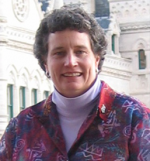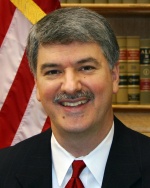Connecticut 2010 legislative election results
Senate
|
Alabama • Alaska • Arizona • Arkansas • California • Colorado • Connecticut • Delaware • Florida • Georgia • Hawaii • Idaho • Illinois • Indiana • Iowa • Kansas • Kentucky • Maine • Maryland • Massachusetts • Michigan• Minnesota • Missouri • Montana • Nebraska • Nevada • New Hampshire • New Mexico • New York • North Carolina • North Dakota • Ohio • Oklahoma • Oregon • Pennsylvania • Rhode Island • South Carolina • South Dakota • Tennessee • Texas • Utah • Vermont • Washington • West Virginia • Wisconsin • Wyoming |
| Other 2010 Election information |
Connecticut State Senate Election Results
This page contains macro-level election results and analysis for the Connecticut State Senate. For results in individual contests see our Connecticut State Senate elections, 2010 page. The following is a breakdown of the state senate before and after the election:
| Connecticut State Senate | |||
|---|---|---|---|
| Party | As of November 1, 2010 | After the 2010 Election | |
| Democratic Party | 24 | 23 | |
| Republican Party | 12 | 13 | |
| Total | 36 | 36 | |
What You'll See on This Page
This page displays the following lists of candidates
- Incumbents who ran on November 2
- Incumbents who were defeated
- Challengers who defeated an incumbent
- Newly elected senators
- List of all winners
- Unopposed candidates
- Third party candidates
State Senate Overview:
- There were 32 incumbents who ran in the November 2 general election. Only 1 incumbent lost, and thus 31 incumbents were re-elected to the Connecticut State Senate.
- One incumbent Democrat lost his re-election bid.
- There will be 5 new senators sworn-in. Of those 5, 2 are Democrats and 3 are Republicans
- Of the 36 seats up for election, 23 were won by Democratsand 13 by Republicans.
- 6 candidates were unopposed, 4 Democrats and 2 Republicans.
- Only 2 candidates ran as an independent or third party candidate in the general election.
Incumbency Analysis
Of the 1,167 state senate seats up for election in 2010, incumbents ran for 894 (76.6%) of them. Of these 894, 94 lost their re-election bids, 89 Democrats and 5 Republicans. In Connecticut, four incumbent senators did not run for re-election on the November 2 ballot, while 32 incumbents (88.9%) ran for re-election. Of these 32 incumbents, 1 was defeated. He was a Democrat.
Incumbents who ran on November 2
The following is a list of all of the incumbents who ran on the November 2 general election ballot:
- Anthony Musto
- Edwin Gomes
- Michael McLachlan (Connecticut)
- Scott Frantz
- Robert Kane
- Andrea Stillman
- Andrew Maynard (Connecticut)
- Anthony Guglielmo
- Antonietta Boucher
- Donald DeFronzo
- Donald Williams (Connecticut)
- Edward Meyer
- Edith Prague
- Eileen Daily
- Eric Coleman (Connecticut)
- Gary LeBeau
- Gayle Slossberg
- John Fonfara
- Joan Hartley
- John Kissel
- John McKinney (Connecticut)
- Joseph Crisco
- Kevin Witkos
- Leonard Fasano
- Martin Looney
- Paul Doyle
- Toni Harp
- Thomas Gaffey
- Thomas Colapietro
- Bob Duff (Connecticut)
- Andrew McDonald
- Andrew Roraback
Incumbents defeated
The following is a list of incumbents defeated on November 2:
| Candidate | Party | District |
|---|---|---|
| Thomas Colapietro |
Challengers who beat an incumbent
The following is a list of challengers who defeated an incumbent on November 2:
| Candidate | Party | District |
|---|---|---|
| Jason Welch (Connecticut) |
New State Senators and General Election Winners
388 new senators were elected across the country. This includes challengers who defeated incumbents as well as candidates who won open seats. Of these 388, 278 were Republicans and 110 were Democrats. In Connecticut, 5 new senators will be sworn-in. Of those 5, 2 are Democrats and 3 are Republicans. In the 4 open seat contests, Republicans won 2 and Democrats 2. In total, Connecticut elected 36 senators, 13 Republicans and 23 Democrats.
Newly elected senators
The following are the newly-elected members of the Connecticut State Senate:
Democratic
Republican
Open Seat Winners
The following is a list of candidates who won election in seats where no incumbent was running:
Democratic
Republican
Candidates who won election
The following is a list of all candidates elected to the Connecticut State Senate:
Democratic
- Anthony Musto
- Edwin Gomes
- Andrea Stillman
- Andrew Maynard (Connecticut)
- Beth Bye
- Donald DeFronzo
- Donald Williams (Connecticut)
- Edward Meyer
- Edith Prague
- Eileen Daily
- Eric Coleman (Connecticut)
- Gary LeBeau
- Gayle Slossberg
- John Fonfara
- Joan Hartley
- Joseph Crisco
- Martin Looney
- Paul Doyle
- Steve Cassano
- Toni Harp
- Thomas Gaffey
- Bob Duff (Connecticut)
- Andrew McDonald
Republican
Competitiveness
Across the nation, 1,167 state senate seats were up for election in 2010. 1,143 of those seats were partisan seats (24 seats were up for election in Nebraska's nonpartisan unicameral legislature). In 320 (28.0%) of these state senate contests, there was a major party candidate with no major party opposition. In Connecticut, 6 candidates (16.67% of seats) faced no major party opposition. Of these 6, 4 were Democrats and 2 were Republicans.
Unopposed candidates in general election
The following candidates did not face major party competition:
Democratic
Republican
Ballot Access
Across the nation, 140 independent or third party candidates ran for state senate. In Connecticut, 2 (3%) of the 67 senate candidates ran as an independent or third party candidate. She won election in the November 2 general election.
Third party candidates
The following is a list of third party and independent candidates who ran in 2010:
House
|
Alabama • Alaska • Arizona • Arkansas • California • Colorado • Connecticut • Delaware • Florida • Georgia • Hawaii • Idaho • Illinois • Indiana • Iowa • Kansas • Kentucky • Maine • Maryland • Massachusetts • Michigan• Minnesota • Missouri • Montana • Nebraska • Nevada • New Hampshire • New Mexico • New York • North Carolina • North Dakota • Ohio • Oklahoma • Oregon • Pennsylvania • Rhode Island • South Carolina • South Dakota • Tennessee • Texas • Utah • Vermont • Washington • West Virginia • Wisconsin • Wyoming |
| Other 2010 Election information |
Connecticut State House Election Results
This page contains macro-level election results and analysis for the Connecticut House of Representatives. For results in individual contests, see our Connecticut House of Representatives elections, 2010. The following is a breakdown of the state house before and after the election:
| Connecticut House of Representatives | |||
|---|---|---|---|
| Party | As of November 1, 2010 | After the 2010 Election | |
| Democratic Party | 114 | 97 | |
| Republican Party | 37 | 54 | |
| Total | 151 | 151 | |
What You'll See on This Page
This page displays the following lists of candidates
- Incumbents who ran on November 2
- Incumbents who were defeated
- Challengers who defeated an incumbent
- Newly elected senators
- List of all winners
- Unopposed candidates
- Third party candidates
State House Overview:
- There were 136 incumbents who ran in the November 2 general election. Only 15 incumbents lost, and thus 121 incumbents were re-elected to the Connecticut House of Representatives.
- No Republican incumbents lost in the general election, while 15 Democratic incumbents lost.
- There will be 30 new representatives sworn-in. Of those 30, 10 are Democrats and 20 are Republicans
- Of the 151 seats up for election, 97 were won by Democrats and 54 by Republicans.
- 36 candidates were unopposed, 22 Democrats and 14 Republicans.
- Only 14 candidates ran as an independent or third party candidate in the general election.
Incumbency Analysis
Of the 4,958 state house seats up for election, incumbents ran in the general election for 4,091 (79.5%) of them. Of these 4,091 incumbents, 413 lost their re-election bids, 403 Democrats and 10 Republicans. In Connecticut, 136 (90.1%) incumbents ran in the general election. Of these 136, 15 incumbent representatives were defeated. All 15 were Democrats.
Incumbents who ran on November 2
The following is a list of all of the incumbents who ran on the November 2 general election ballot:
- Arthur O'Neill
- Matthew Ritter
- Jason Bartlett
- Minnie Gonzalez
- Kelvin Roldan
- Marie Lopez Kirkley-Bey
- Hector Robles
- Douglas McCrory
- Joan A. Lewis
- Jason Rojas
- Henry Genga
- Timothy Larson
- John Thompson (Connecticut legislator)
- Bill Aman
- David Baram
- Linda Schofield
- Timothy LeGeyt
- Andrew M. Fleischmann
- David D. McCluskey
- Elizabeth A. Boukus
- Marilyn Giuliano
- Tim O'Brien (Connecticut)
- John C. Geragosian
- Peter Tercyak
- Sandy Nafis
- Russell Morin
- Antonio Guerrera
- Joe Aresimowicz
- Thomas Kehoe
- James O'Rourke
- Joseph Serra
- Gail Hamm
- James Field Spallone
- Ed Jutila
- Elizabeth Ritter
- Ernest Hewett
- Edward Moukawsher
- Elissa Wright
- Tom Reynolds (Connecticut)
- Diana Urban
- Mae Flexer
- Steve Mikutel
- Christopher Coutu
- Linda Orange
- Susan Johnson (Connecticut)
- Mike Alberts
- Penny Bacchiochi
- Bryan Hurlburt
- Pamela Sawyer
- Claire Janowski
- Ted Graziani
- Kathleen Tallarita
- Peggy Sayers
- Annie Hornish
- John Rigby
- Roberta Willis
- Michelle Cook
- Craig Miner
- Clark Chapin
- Sean Williams
- Rosa Rebimbas
- Anthony D'Amelio
- Larry Butler (Connecticut)
- Jeffrey Berger
- Selim Noujaim
- David Aldarondo
- John Piscopo
- Frank Nicastro, Sr.
- John Mazurek
- Bruce Zalaski
- Emil Altobello
- Catherine Abercrombie
- Christopher Donovan
- Mary Mushinsky
- Vincent Candelora
- J. Brendan Sharkey
- Vickie Orsini Nardello
- Mary Fritz
- Peter Villano
- Patricia Dillon
- Toni Walker
- Gary Winfield
- Juan Candelaria
- Robert Megna
- Patricia Widlitz
- Michael Lawlor
- Matthew Lesser
- Deborah Heinrich
- Lonnie Reed
- Linda Gentile
- Theresa Conroy
- Christopher Lyddy
- David Scribner
- Joseph Taborsak
- Bob Godfrey
- John Frey
- DebraLee Hovey
- Jason Perillo
- Themis Klarides
- Stephen Dargan
- Louis Esposito (Connecticut House of Representatives District 116)
- Paul Davis (Connecticut state representative)
- Richard Roy
- Laura Hoydick
- Terry Backer
- Lawrence Miller (Connecticut)
- T.R. Rowe
- John Hetherington
- Christopher Caruso
- John Hennessy
- Andres Ayala, Jr.
- Ezequiel Santiago
- David Labriola
- Thomas Drew
- Kim Fawcett
- Tony Hwang
- Janice Giegler
- Kevin Ryan (Connecticut)
- Bruce Morris
- Terrie Wood
- William Tong
- Carlo Leone
- Livvy Floren
- Lile Gibbons
- Fred Camillo
- Christopher Wright (Connecticut)
- Charles Clemons (Connecticut)
- Chris Perone
- Lawrence Cafero
- Patricia Miller (Connecticut)
- Peggy Reeves
- Melissa Riley
- Auden Grogins
- Gerald Fox III
- Steve Fontana
Incumbents defeated
The following is a list of incumbents defeated on November 2:
| Candidate | Party | District |
|---|---|---|
| Jason Bartlett | ||
| Joan A. Lewis | ||
| Thomas Kehoe | ||
| James O'Rourke | ||
| Ted Graziani | ||
| Annie Hornish | ||
| John Mazurek | ||
| Theresa Conroy | ||
| Thomas Drew | ||
| Peggy Reeves | ||
| Steve Fontana |
Challengers who beat an incumbent
The following is a list of challengers who defeated an incumbent on November 2:
New Representatives and General Election Winners
1,345 new representatives were elected across the country. This includes challengers who defeated incumbents as well as candidates who won open seats. Of these 1,345, 988 were Republicans and 357 were Democrats. In Connecticut, 30 new representatives will be sworn-in. Of those 30, 10 are Democrats and 20 are Republicans. In the 15 open seat contests, Republicans won 5 and Democrats 10. In total, Connecticut elected 151 representatives, 54 Republicans and 97 Democrats.
Newly elected representatives
The following are the newly-elected members of the Connecticut House of Representatives:
Democratic
Republican
Open Seat Winners
The following is a list of candidates who won election in seats where no incumbent was running:
Democratic
Republican
Candidates who won election
The following is a list of all candidates elected to the Connecticut House of Representatives:
Democratic
- Matthew Ritter
- Minnie Gonzalez
- Kelvin Roldan
- Marie Lopez Kirkley-Bey
- Hector Robles
- Douglas McCrory
- Jason Rojas
- Henry Genga
- Timothy Larson
- Geoff Luxenberg
- John Thompson (Connecticut legislator)
- David Baram
- Linda Schofield
- Andrew M. Fleischmann
- Brian Becker
- David D. McCluskey
- Elizabeth A. Boukus
- Tim O'Brien (Connecticut)
- John C. Geragosian
- Peter Tercyak
- Sandy Nafis
- Russell Morin
- Antonio Guerrera
- Joe Aresimowicz
- Joseph Serra
- Gail Hamm
- James Field Spallone
- Ed Jutila
- Elizabeth Ritter
- Ernest Hewett
- Edward Moukawsher
- Elissa Wright
- Tom Reynolds (Connecticut)
- Diana Urban
- Mae Flexer
- Steve Mikutel
- Linda Orange
- Susan Johnson (Connecticut)
- Daniel S. Rovero
- Bryan Hurlburt
- Gregory Haddad
- Claire Janowski
- Kathleen Tallarita
- David William Kiner
- Peggy Sayers
- Elaine O'Brien
- Roberta Willis
- Michelle Cook
- Larry Butler (Connecticut)
- Jeffrey Berger
- David Aldarondo
- Frank Nicastro, Sr.
- Bruce Zalaski
- Emil Altobello
- Catherine Abercrombie
- Christopher Donovan
- Mary Mushinsky
- J. Brendan Sharkey
- Vickie Orsini Nardello
- Mary Fritz
- Peter Villano
- Patricia Dillon
- Toni Walker
- Gary Winfield
- Juan Candelaria
- Roland J. Lemar
- Robert Megna
- Patricia Widlitz
- Michael Lawlor
- Matthew Lesser
- Deborah Heinrich
- Lonnie Reed
- Linda Gentile
- Christopher Lyddy
- Joseph Taborsak
- Bob Godfrey
- Stephen Dargan
- Louis Esposito (Connecticut House of Representatives District 116)
- Paul Davis (Connecticut state representative)
- Kim Rose
- Richard Roy
- Terry Backer
- Christopher Caruso
- John Hennessy
- Andres Ayala, Jr.
- Ezequiel Santiago
- Kim Fawcett
- Jonathan Steinberg (Connecticut)
- Kevin Ryan (Connecticut)
- Bruce Morris
- William Tong
- Carlo Leone
- Christopher Wright (Connecticut)
- Charles Clemons (Connecticut)
- Chris Perone
- Patricia Miller (Connecticut)
- Melissa Riley
- James Crawford (Connecticut)
- Auden Grogins
- Gerald Fox III
Republican
- Arthur O'Neill
- Dan Carter
- Tim Ackert
- Bill Aman
- Timothy LeGeyt
- Bill Wadsworth
- Marilyn Giuliano
- Prasad Srinivasan
- Christie Carpino
- Christopher Coutu
- Mike Alberts
- Penny Bacchiochi
- Pamela Sawyer
- Christopher Davis (Connecticut)
- William Simanski
- John Rigby
- Craig Miner
- Clark Chapin
- Sean Williams
- Rosa Rebimbas
- Anthony D'Amelio
- Selim Noujaim
- John Piscopo
- Whit Betts
- Robert C. Sampson
- Vincent Candelora
- Dave Yaccarino Sr.
- Al Adinolfi
- Leonard Greene, Jr.
- David Scribner
- Richard A. Smith (Connecticut)
- John Frey
- DebraLee Hovey
- Jason Perillo
- Themis Klarides
- Laura Hoydick
- Lawrence Miller (Connecticut)
- T.R. Rowe
- John Hetherington
- David Labriola
- Brenda L. Kupchick
- Tony Hwang
- John Shaban
- Janice Giegler
- Terrie Wood
- Livvy Floren
- Lile Gibbons
- Fred Camillo
- Gail Lavielle
- Lawrence Cafero
- Michael Molgano
Competitiveness
Across the nation, 4,958 state house seats were up for election in 2010. In 1,680 (33.9%) of these state house contests, there was a major party candidate with no major party opposition. In Connecticut, 36 candidates (23.8% of all seats) faced no major party opposition. Of these 36, 22 were Democrats and 14 were Republicans.
Unopposed candidates in general election
The following candidates did not face major party competition:
Democratic
- Timothy Larson
- Juan Candelaria
- Andres Ayala, Jr.
- Antonio Guerrera
- Catherine Abercrombie
- Christopher Caruso
- David D. McCluskey
- Douglas McCrory
- Edward Moukawsher
- Emil Altobello
- Gary Winfield
- Hector Robles
- John Hennessy
- Louis Esposito (Connecticut House of Representatives District 116)
- Marie Lopez Kirkley-Bey
- Minnie Gonzalez
- Patricia Dillon
- Robert Megna
- William Tong
- Roland J. Lemar
- Stephen Dargan
- Toni Walker
Republican
Ballot Access
In Connecticut, 14 (4.9%) of the 287 house candidates ran as independent or third party candidates. None won election in the November 2 general election.
Third party candidates
The following is a list of third party and independent candidates who ran in 2010:
National Partisan Trends
|
Alabama • Alaska • Arizona • Arkansas • California • Colorado • Connecticut • Delaware • Florida • Georgia • Hawaii • Idaho • Illinois • Indiana • Iowa • Kansas • Kentucky • Maine • Maryland • Massachusetts • Michigan• Minnesota • Missouri • Montana • Nebraska • Nevada • New Hampshire • New Mexico • New York • North Carolina • North Dakota • Ohio • Oklahoma • Oregon • Pennsylvania • Rhode Island • South Carolina • South Dakota • Tennessee • Texas • Utah • Vermont • Washington • West Virginia • Wisconsin • Wyoming |
| Other 2010 Election information |
National Partisan Trends
The following tables detail the partisan breakdown of national election results. These results provide context for Republican gains in Connecticut.
Incumbents who were defeated in the general election
Across the nation, only 15 Republican incumbents were defeated while 492 Democratic incumbents were defeated. In total, 507 (10.4%) of the 4,872 incumbents running in the general election were defeated. The following is a breakdown of incumbent defeats in the 2010 general election:
The following is the breakdown of incumbents who lost.
| Incumbents defeated in 2010 legislative elections | |||
|---|---|---|---|
| Party | Senate | House | Total |
| Democratic | 89 | 403 | 492 |
| Republican | 5 | 10 | 15 |
| TOTALS | 94 | 413 | 507 |
Total new legislators elected
In total, 1,733 (28.3%) new legislators were elected in 2010. Of these 1,733, 1,266 (73.1%) are Republicans and 467 (26.9%) are Democrats.
The following is the breakdown of new legislators.
| New Legislators after the 2010 legislative elections | |||
|---|---|---|---|
| Party | Senate | House | Total |
| Democratic | 110 | 357 | 467 |
| Republican | 278 | 988 | 1,266 |
| TOTALS | 388 | 1,345 | 1,733 |
Winners of Open Seats
Open seats contests made up 1,178 (19.2%) of the 6,125 seats on November 2. Of these 1,178 open seats, Republicans won 729 (61.9%) while Democrats won 449 (38.1%). Going into the election, the number of open seats formerly held by each party was quite similar. Estimates prior to the election suggest that approximately 52% of the open seats were previously held by Republicans and 48% were held by Democrats.
The following is the breakdown of open seat winners.
| Open Seat Winners in 2010 legislative elections | |||
|---|---|---|---|
| Party | Senate | House | Total |
| Democratic | 108 | 341 | 449 |
| Republican | 191 | 538 | 729 |
| TOTALS | 299 | 879 | 1,178 |
Impact on legislative majorities
- See also: Partisan balance of state legislatures
Heading into the November 2 elections, the Democratic Party held a commanding lead in state houses in the 88 legislative chambers that held elections in 2010. 52 of the 88 chambers, or nearly 60% of them, had a Democratic majority, while only 33 of them had a Republican majority. (Two chambers had an exactly equal number of Democrats and Republicans and one is officially nonpartisan.) The following is a partisan breakdown of state legislatures prior to the November 2 election:
| Partisan breakdown before the November 2010 Election | ||||
|---|---|---|---|---|
| Legislative chamber | ||||
| State senates | 23 | 18 | 1 | 1 |
| State houses | 29 | 15 | 1 | - |
| Totals: | 52 | 33 | 2 | 1 |
As a result of the election, Republicans picked up 20 legislative chambers while Democrats lost 20. Republicans won 53 total chambers on November 2, while Democrats won only 32. The following is a partisan breakdown of state legislatures after the November 2 election:
| Partisan breakdown after the November 2010 Election | ||||
|---|---|---|---|---|
| Legislative chamber | ||||
| State senates | 16 | 25 | 1 | 1 |
| State houses | 16 | 28 | 1 | 0 |
| Totals: | 32 | 53 | 2 | 1 |
Another way to examine the data is to gauge how many chambers had gains for the Democratic Party versus the Republican Party. Using this variable, the wide-sweeping Republican victory is further amplified. Democrats bolstered their majorities in only 7 of 88 (7.96%) state chambers. These legislatures are as follows:
| State legislative chambers where Democrats gained seats on November 2 | ||
|---|---|---|
| State | Chamber | Number of seats gained by Democrats |
| California | Assembly | + 2 |
| Delaware | House | + 2 |
| Hawaii | Senate | + 1 |
| Maryland | Senate | + 2 |
| Massachusetts | Senate | + 1 |
| Missouri | Senate | + 1 |
| West Virginia | Senate | + 1 |
In 7 chambers, the GOP kept their current number of seats. In one chamber, the California State Assembly, both major parties gained seats by filling 2 vacancies and defeating an incumbent independent. Overall, the Republican Party picked up legislative seats in 75 (85.2%) of the 88 legislative chambers that held elections on November 2.
Impact on State Politics
Along with the GOP capture of the U.S. House of Representatives, state Republicans gained trifectas (control of the governorship, house, and senate) in 12 states. The following is a breakdown of trifectas across the nation, before and after the 2010 election:
| Trifectas before and after the 2010 Election | ||||||
|---|---|---|---|---|---|---|
| Party | Before election | U.S. House seats | After election | U.S. House seats | Gain/loss states | Gain/loss congressional seats |
| 16 | 131 | 11 | 115 | -5 | -16 | |
| 8 | 66 | 20 | 198 | +12 | +132 | |
Before the election, 131 U.S House seats were in states with Democratic trifectas, while 66 districts were in states with Republican trifectas. After the election, Republicans trifectas control redistricting for 198 U.S. House seats while Democrats control only 115. Additionally, California, the strongest Democratic trifecta with 53 U.S. House representatives, passed propositions that take redistricting power away from state government.







